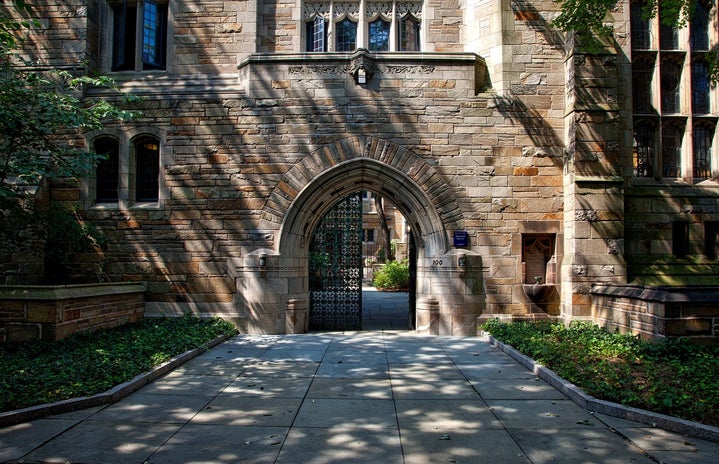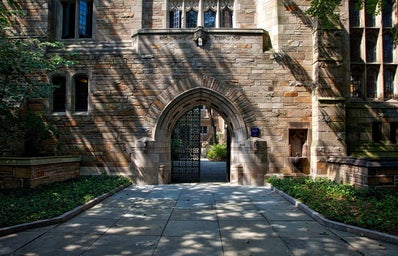I’m a self-professed documentary junkie. There’s nothing I love more than snuggling into bed with a glass of wine and a documentary. I’ll watch just about anything, from crime documentaries to ESPN’s 30 for 30 series, but when I heard of The Hunting Ground, I was apprehensive. Sexual assault is a sensitive topic that requires the utmost care, and I just wasn’t sure that a two-hour film would do it justice. I was wrong. So wrong. Kirby Dick’s documentary tactfully navigates the nuances of sexual assault on college campuses in a way that is both terrifying and beautiful. It’s something that everyone should watch.
The documentary, which was released in 2015 the winner of both the Producer’s Guild of America Stanley Kramer Award and the Utah Film Critics Best Documentary, follows two women—Andrea and Annie—from the University of North Carolina as they deal with their own sexual assaults and the backlash that they faced from the University. Feeling stonewalled, humiliated, and disappointed by the lack of support they were given, they create a victim’s advocacy system, tracking reports of sexual assault that were accompanied by a lack of response from the universities. Eventually, they file a lawsuit against the University of North Carolina under Title IX. Their public action was a catalyst for the federal investigation into American colleges and universities for Title IX violations.
The documentary’s most powerful tool is the wealth of first-person accounts that are filmed. There are over a dozen brave men and women who come forward to talk about their assaults in sometimes graphic detail. The number of commonalities in the stories is striking—nearly every survivor was told by a school administrator not to go forward with investigations, and many were lectured about their responsibility in the assault. One woman was even told, “Rape was like football and if you look back on the game, what would you change?” Yes. I’m serious. In most instances, the survivors said that the way they were treated by the administration after their assault was worse than the assault itself.
The high-profile sexual assault case that involved Florida State University quarterback Jameis Winston even made the documentary. Erica Kinsman, a former student at FSU, recounts in detail her sexual assault and names Jameis Winston as the perpetrator. After going to the hospital for a full battery of testing and alerting the police, she explains that nothing was done—his DNA wasn’t even tested until after he had won a Heisman Trophy. Erica was harassed by the student body so much that she transferred to another school.
Probably the most poignant segment of the documentary is the harrowing story of first-year Lizzie Seeburg at St. Mary’s College (a sister school of the University of Notre Dame), who was sexually assaulted by a football player at Notre Dame. After filing a formal complaint with the school, the young woman was harassed by other members of the student body and stonewalled by the administration, who refused to bring in the man in question during the football season. Lizzy committed suicide in 2010, citing threatening texts from other football players as one reason.
The documentary also hits you hard with the facts. While most administrators cite the concern of false reporting, only between 2% and 6% of sexual assault reports are false, meaning between 94% and 98% of reports are true. Individuals in all-male environments such as fraternities and sports teams are four times as likely to commit assault than individuals who do not belong to an all-male organization, yet only 8% of all college age males will commit assault. And while there are low numbers of men reporting assault, that doesn’t necessarily mean that men are not assaulted as often. It just means that they’re not reporting as frequently.
What we learn from the statistics, as well as from former safety officers and college administrators, is that administrations are more likely to cover up assaults to keep numbers artificially low. Additionally, individuals who are punished by the school for sexual assault are more likely to sue the schools than survivors are for not responding to their case. Ultimately, to some administrators, their school’s reputation is more important than the safety of its students.Okay, so everything that you’ve just read is sad. Really, really sad. After LIzzie’s story, I was ready to turn off the documentary and never leave my room again. But as all good films do, this documentary picked up. After going public with their lawsuit, Annie and Andrea began receiving hundreds of messages, emails, and phone calls from survivors describing the exact same experience. On a mission to raise awareness, the women travelled across the country to dozens of schools to help other survivors file suits and go public with them.
The film ends with a wave of student-led activism, including Emma Sulkowicz’s senior art project at Columbia University. Honestly, this is the part of the film that makes me tear up the most. After hearing all of the awful things survivors have gone through, including the lack of support from the institutions who have promised to protect them and the feeling of utter dread that I felt, seeing students of all genders mobilize in a unified effort to end sexual assault on campus is so inspiring to me. People are good, and they are actively shedding light on an aspect of campus life that needs darkness to thrive.Conversations about sexual assault are scary, but they’re necessary. If you want to start a conversation about it, this documentary can help you do it. It’s available on Netflix, iTunes, and YouTube for a small fee.

